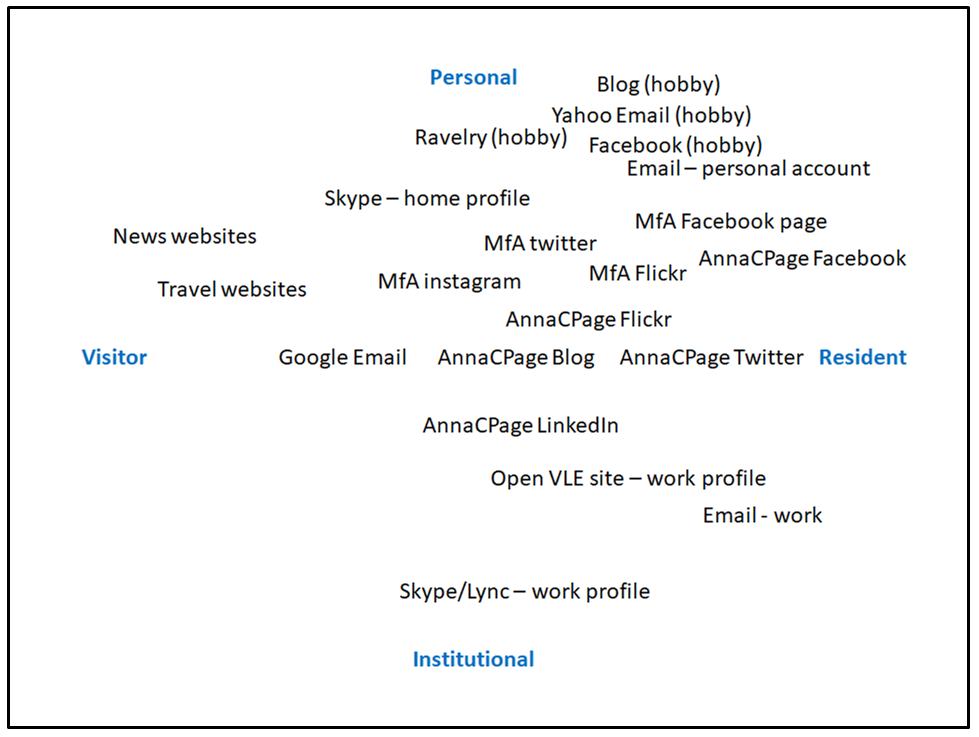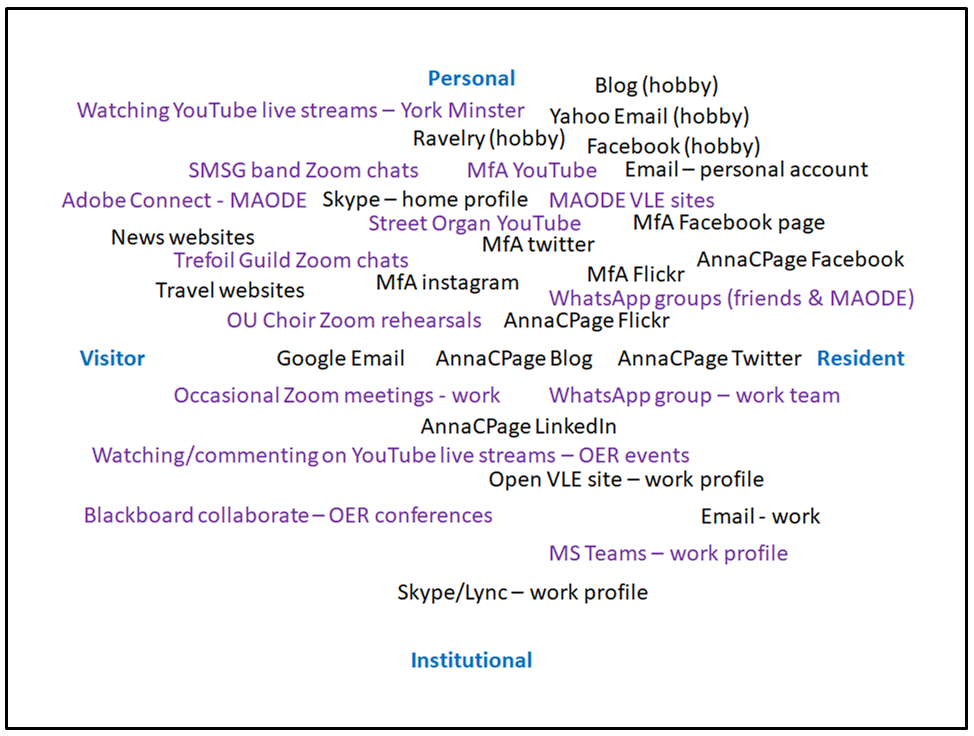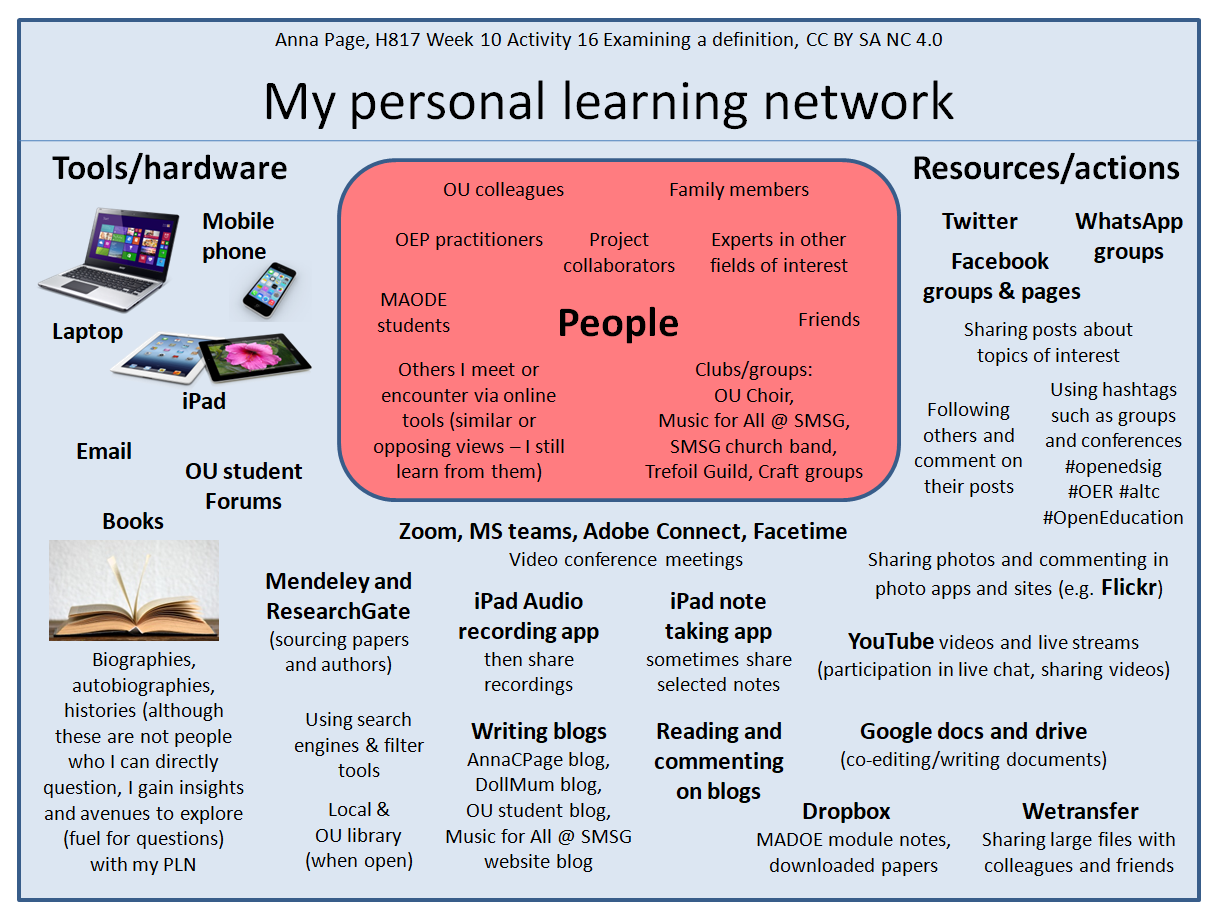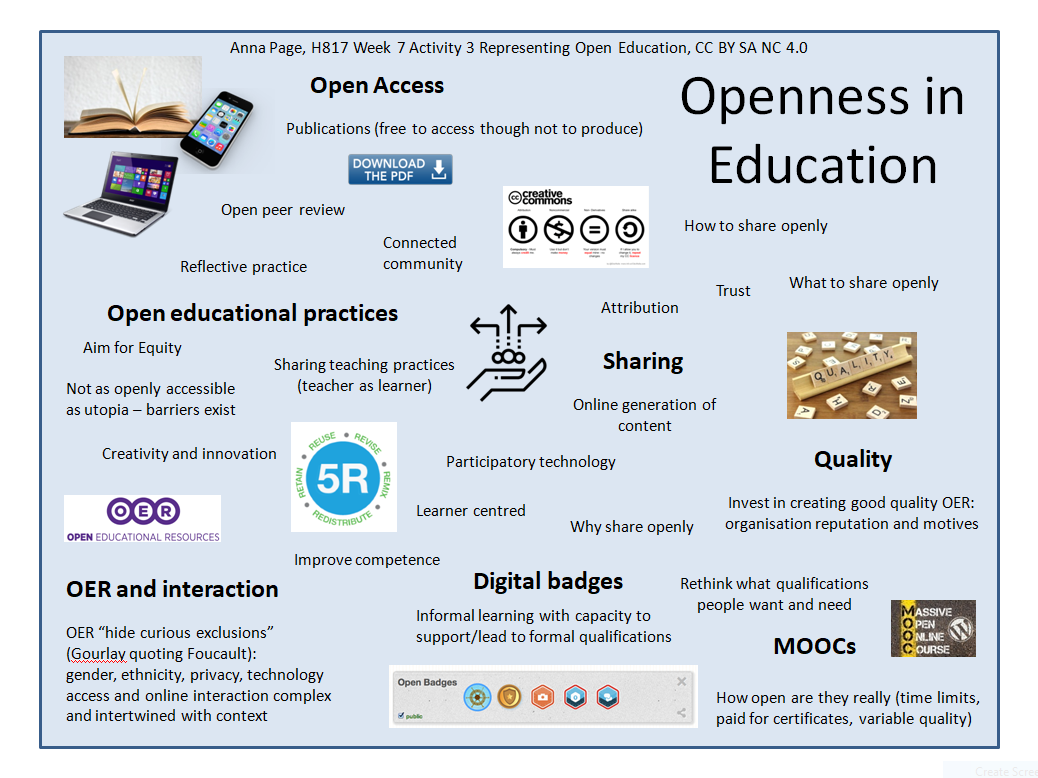At the start of this project we didn’t know each other, having only met via the module forums in Blocks 1 and 2. We had to gauge each other’s vision and strengths from our early discussions via the forum and our WhatsApp group before our first meeting online meeting on 13 May. As a group of 4, smaller than the other groups, we were also faced with proportionally more work per person than others. We were all at different stages in the module at that point, with some not officially ready to start block 3, an added complication. Therefore, we began with more of a mountain to climb than was ideal, however with great determination and hope to progress as far as possible with the project and get to know each other a bit in the process. I’m proud we have succeeded in getting through all the tasks and have produced a project website (https://sites.google.com/view/h817-blue-group/home) which we think presents our ideas and evidence well. I am also pleased with how well we have worked together in a spirit of respectful encouragement towards each other, there have been no major disagreements about approach which could have caused a lot of difficulty, as we have each approached the project with willingness to build academic dialogue and consensus regarding practice around each topic of discussion.
Looking back, I realise our collective willingness to be flexible about tasks and encouraging towards each other (even if only able to offer moral rather than practical support towards TMA02 submission) was a key to our success in getting as far as we did. Indeed, in some respects we were practising something of what Ken noted was needed in successful use of digital storytelling in professional learning situations: a “level of emotional support for the learner” (Wagner, 2021). The informality of our WhatsApp group helped us get some idea of each other’s interests and attitudes, this helped us gradually build our own mini ‘community of practice’ (Wenger, 1998) of collective support as we constructed our project together. Meeting each other regularly online (8 meetings from 13 May to 18 June, with one more scheduled to finish off our heuristic evaluation) has also helped us connect visually as we mostly kept cameras on during our meetings. A strangely fortunate by-product of pandemic induced remote working meant we were already familiar with the mechanics and practicalities of working with others at a distance (although the others in our team are all working face-to-face with colleagues as well as doing some remote working) so the group project with other students spread all around the country (we are all UK based so had no time-zone problems) was not quite so daunting as it might have been.
One of the things I learned was the need for patience with asynchronous working when others are at different stages in a task, as I wanted us to keep going while giving enough attention to each task, striking a balance often meant we were working on 2 or 3 tasks concurrently. We all had a collective responsibility to take note of what we had to do next, though the team leader and project manager roles were geared towards guiding such activity. While the project manager was busy finishing off her TMA02, to a certain extent I, as team leader, assumed some of the project manager role (updating the progress tracker), while she made excellent notes during our synchronous meetings. Keeping people motivated wasn’t as hard as it could have been if we had allowed the sheer volume of tasks to overwhelm us, and fortunately everyone was keen to make a good contribution especially when utilising their strengths, which fortunately were complimentary. During persona creation it was particularly helpful that two of our group (Potenza and Paul) work in the healthcare sector which enabled us to add realism to the characters we designed. The research manager’s efforts to expand on evidence in addition to what each of us shared resulted in an impressive depth and breadth of research to inform our approach. The media manager’s technical skills helped us configure our website settings and build the prototype interactivity more swiftly and effectively than if all of us had spent the time getting to grips with the prototyping software in a short space of time. I did plenty of consistency, structural, navigational and accessibility changes to our website. I also summarised our vision and findings into the ‘Our definition and use of Digital Storytelling’ and ‘Design Challenge’ pages, and identified the need for ethical practices to underpin the use of Digital Storytelling in healthcare CPD in a case study ‘First do no harm: developing an ethical process of consent and release for digital storytelling in healthcare’ (Page, 2021).
The process of practicing learning design in a small project team using the 19 steps of the Learning Design Studio approach has illuminated the importance of allowing time to fully explore each step. Doing learning design thoroughly resulted in a more convincing prototype than skimping some steps would have done. Paul’s Design Pattern ‘Is it the digital storytelling or the process that counts?’ (Hindle, 2021) illuminates this point, there is huge value and much to be learned from participating in the process, regardless of the quality of the resulting product.
We have a good spread of strengths and experience in our small team and I’m glad we picked the focus of our project that we did, inspired by a real project paused by the pandemic, as explained by Potenza in her case study ‘Animation as a Medium to help clinicians understand the secondary healthcare experiences of patients’ (Atiogbe, 2021). It would be brilliant if what we have done as a small group could inform a rejuvenated healthcare CPD project which uses Digital Storytelling to helps towards more empathetic healthcare for prisoner patients, it would turn our group assignment into a reusable assignment with practical benefit for a real situation.
I have really enjoyed working with Ken, Paul and Potenza and would like to thank them for accommodating me as team leader.
References
Atiogbe, P. (2021) ‘Animation as a Medium to help clinicians understand the secondary healthcare experiences of patients’, Case study on H817 21B Blue group project website. Available at https://sites.google.com/view/h817-blue-group/research/case-studies/animation-as-a-medium (accessed 21 June 2021)
Hindle, P. (2021) ‘Is it the digital storytelling or the process that counts?’, Design process on H817 21B Blue group project website. Available at https://sites.google.com/view/h817-blue-group/design/design-patterns/pattern-digital-storytelling-or-process (accessed 21 June 2021)
Page, A. (2021) ‘First do no harm: developing an ethical process of consent and release for digital storytelling in healthcare’, Case study on H817 21B Blue group project website. Available at https://sites.google.com/view/h817-blue-group/research/case-studies/first-do-no-harm (accessed 21 June 2021)
Wagner, K. (2021) ‘Storytelling and professional learning: a phenomenographic study of students’ experience of patient digital stories in nurse education’, Case study on H817 21B Blue group project website. Available at https://sites.google.com/view/h817-blue-group/research/case-studies/storytelling-and-professional-learning (accessed 21 June 2021)
Wenger, E. (1998) Communities of Practice: Learning, Meaning, and Identity (New York, Cambridge University Press)
Bibliography
H817 21B AC Blue group website https://sites.google.com/view/h817-blue-group/home



